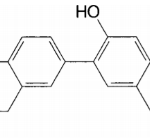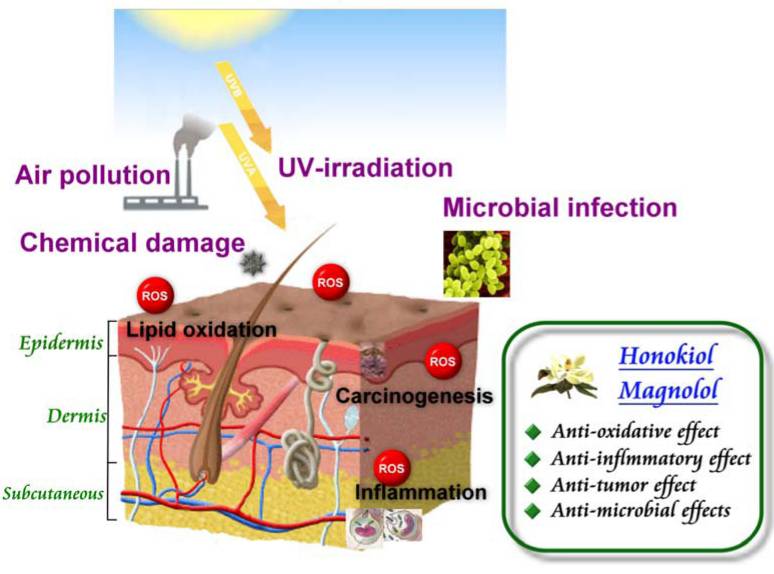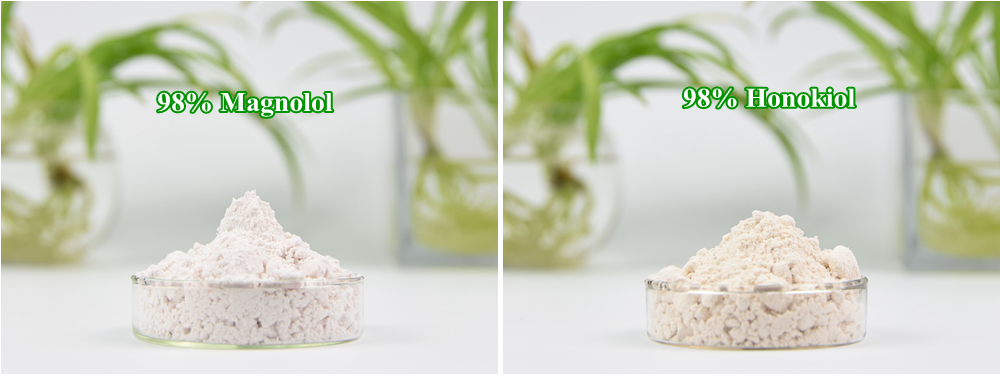Magnolol and honokiol are the main components of traditional Chinese medicine Magnolia officinalis; they are isomers. Magnolol and honokiol both have significant skincare benefits. There are differences and similarities in their pharmacological effects.
1. Differences Between Magnolol and Honokiol
Magnolol and honokiol are isomers of each other. Their chemical properties are similar, but their physical properties are quite different.
| Magnolol | Honokio | |
| Molecular Formula | C18H18O2 | |
| Molecular Weight | 266.0g/mol | |
| Molecular Structure |  |
 |
| Melting Point | 102℃ | 87.5℃ |
| Function | Both magnolol and honokiol have antibacterial and anti-inflammatory activities, and their effects are very similar. However, the difference between the two is reflected in that magnolol is more irritating than honokiol in daily cosmetics. Therefore, honokiol is more favored by formulation engineers. | |

2. Similarities of Magnolol and Honokiol
Both magnolol and honokiol have antibacterial and anti-inflammatory properties for skincare.
2.1 Magnolol and Honokiol Skin Benefits
- Anti-Bacterial
Magnolol and honokiol have a strong inhibitory effect on Streptococcus mutans. Scholars at home and abroad have conducted a large number of studies and found that magnolol and honokiol have an obvious inhibitory effect on the growth and acid production of cariogenic bacteria, including Streptococcus mutans, Lactobacillus, naeslundii, and uiscous. Their inhibitory effects increase with the increase of concentration. Therefore, magnolol and honokiol are effective ingredients that can be added into toothpaste, mouthwash and other oral care products.
A study showed that when magnolol was added to cream as a preservative, the appearance, aroma and pH of the cream were all normal. It indicated that magnolol has a good compatibility in cosmetic formula. At the same time, in the total number of colonies test, no colonies were detected during the test period when the concentration of magnolol was more than 0.125%.
- Anti-Inflammation and Anti-Acne
The P. acnes inhibitory test was conducted on 22 active ingredients with anti-inflammatory effects. The results showed that magnolol has a good inhibitory effect on P. acnes, which is better than metronidazole. Moreover, studies have confirmed that magnolol can inhibit inflammatory enzymes, cytokine production, NF-κB, MAPKs activation and leukocyte activation, showing certain anti-inflammatory properties.
Honokiol has a strong inhibitory effect on P.acnes (Propionibacterium acnes) and P.granulosum (Propionibacterium granules) that cause acne. The Minimum Inhibitory Concentration is 9 mg/L. And it can effectively reduce the increase of IL-8 and TNF-α in THP-1 cells caused by P.acnes, which indicates that honokiol can be used to treat skin inflammation.
- Anti-Aging
Using fluorescence spectrophotometry, it is proved that magnolol and honokiol are the main components of magnolia in scavenging hydroxyl radicals and hydrogen peroxide, and the mass concentration of scavenging hydroxyl radicals is 0.081 mg/L and 0.091 mg/L respectively. Studies have found that magnolol can significantly inhibit the increase in the expression of MMP-1, MMP-9, and MMP-13 in the skin of mice caused by UVB irradiation, so magnolol has anti-photoaging effect. Also, magnolol and honokiol can be used as a sun protection agent to prevent skin irritation caused by UV.

3. Magnolol & Honokiol Uses in Cosmetic Formula
Magnolol and honokiol are currently widely used in cosmetics, but their use is limited due to the characteristics of the product. For example, their water solubility is poor, so using in the aqueous system is hindered.
Additionally, in one study, 3 commonly used penetration enhancers, azone, menthol and transcutol.P were selected to confirm the transdermal absorption rate of magnolol and honokiol. As a result, for magnolol, azone has the best penetration effect, then is menthol and transcutol. P. Among them, 3% azone is the best; and when the concentration of azone reaches 5%, the increase of permeability is on the contrary reduce. For honokiol, transcutol. P has the best penetration effect, then is azone and menthol. However, the same penetration enhancer with the same concentration works differently on magnolol and honokiol.

Good solubility is a key point for cosmetic formula. Plamed magnolol and honokiol both have great solubility in butanediol. We develop 98% magnolol and 98% honokiol, they are high-purity active ingredients with off-white color. Magnolol and honokiol benefit skin a lot, and they are mainly applied in anti-inflammation and anti-acne cosmetics.

Related Reading







